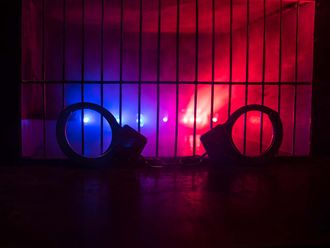
Houston: For the first time since the Apollo era, NASA on Monday named a crew of astronauts for a lunar expedition.
The astronauts will fly around the moon in a mission that would precede the first human landing there since 1972.
In an event here, NASA officials said astronauts Christina Koch, Victor Glover and Reid Wiseman will be joined by Canadian astronaut Jeremy Hansen on the Artemis II mission, which is scheduled to launch late next year.
The announcement comes about four months after the successful completion of the Artemis I flight , a test that for the first time launched the massive Space Launch System rocket and sent the Orion crew capsule, without any astronauts on board, in orbit around the moon.
With the naming of the crew, NASA's Artemis campaign now has human faces attached to it - some of the best and brightest of the astronaut corps - which the space agency hopes will help solidify its support among members of Congress as it prepares for its next flights.
Those missions are months away, however, and likely to be delayed. And the attention of Congress and the American people is often fickle, especially when it comes to space exploration. Even during the height of the Apollo era, polling showed that people's interest soon waned after the first lunar landing and wondered why money wasn't being spent on projects back home.
But so far, NASA has, for the first time in decades, been able to build momentum for a deep-space exploration campaign. Last month, the White House proposed a $27.2 billion budget for NASA, a 7 percent increase over this year, with increased funding for Artemis. The Artemis program is also designed to be more politically resilient with the participation, and investment, of other countries, the growing commercial space industry and more ambitious mission objectives.
Unlike the Apollo missions, in which 12 men walked on the lunar surface and then came home, the Artemis program aims to build a more sustainable presence on and around the moon. It is planning to assemble a space station, known as Gateway, in lunar orbit that astronauts would visit on their way to the moon's surface. Instead of returning to the moon's equatorial region, NASA is now focused on the lunar South Pole, where there is water in the form of ice in its permanently shadowed craters. Water is not only vital for human life, but its component parts - hydrogen and oxygen - can be used as rocket propellant.
As it prepares to return humans to the moon, NASA Administrator Bill Nelson has said the United States is in a space race with China, which is also planning to send astronauts to the South Pole. It has also been working to establish norms of behavior that would govern activities in space and on the moon by having allied nations sign what are known as the Artemis Accords.
As part of the Artemis program, NASA has said the first woman and the first person of color would walk on the moon as it seeks to create a more diverse astronaut corps.
The Artemis II mission would be somewhat similar to Apollo 8, in which Frank Borman, Jim Lovell and Bill Anders orbited the moon in 1968 before the Apollo 11 landing by Neil Armstrong and Buzz Aldrin. The last of the Apollo missions was Apollo 17, and no people have been back to the vicinity of the moon since.
The Artemis II crew is to travel 6,400 miles beyond the far side of the moon in what is known as a "free-return trajectory," where Earth's gravity will pull Orion back after flying by the moon, NASA has said. Beyond the moon, the crew "will be able to see the Earth and the moon from Orion's windows, with the moon close in the foreground and the Earth nearly a quarter-million miles in the background," according to the space agency.
The astronauts here are also training on other new spacecraft. In addition to the Orion capsule, NASA flies crews to the International Space Station on SpaceX's Falcon 9 rocket and Dragon spacecraft.
Boeing also has a contract to fly astronauts to the orbiting laboratory, but it recently said its first flight with astronauts would be delayed again, this time to July, as it continues to work with NASA to make sure its Starliner spacecraft meets all of NASA's requirements.
SpaceX also won the contract to develop the spacecraft that would meet up with Orion in lunar orbit and then ferry astronauts to and from the surface of the moon for the Artemis III lunar landing flight. SpaceX is hoping to launch Starship, a fully reusable vehicle, for the first time later this month from its facility in South Texas.
Given the complexity of the new systems, the Artemis II flight could easily slip into 2025, and a human landing, tentatively scheduled for 2025, could also be delayed.










